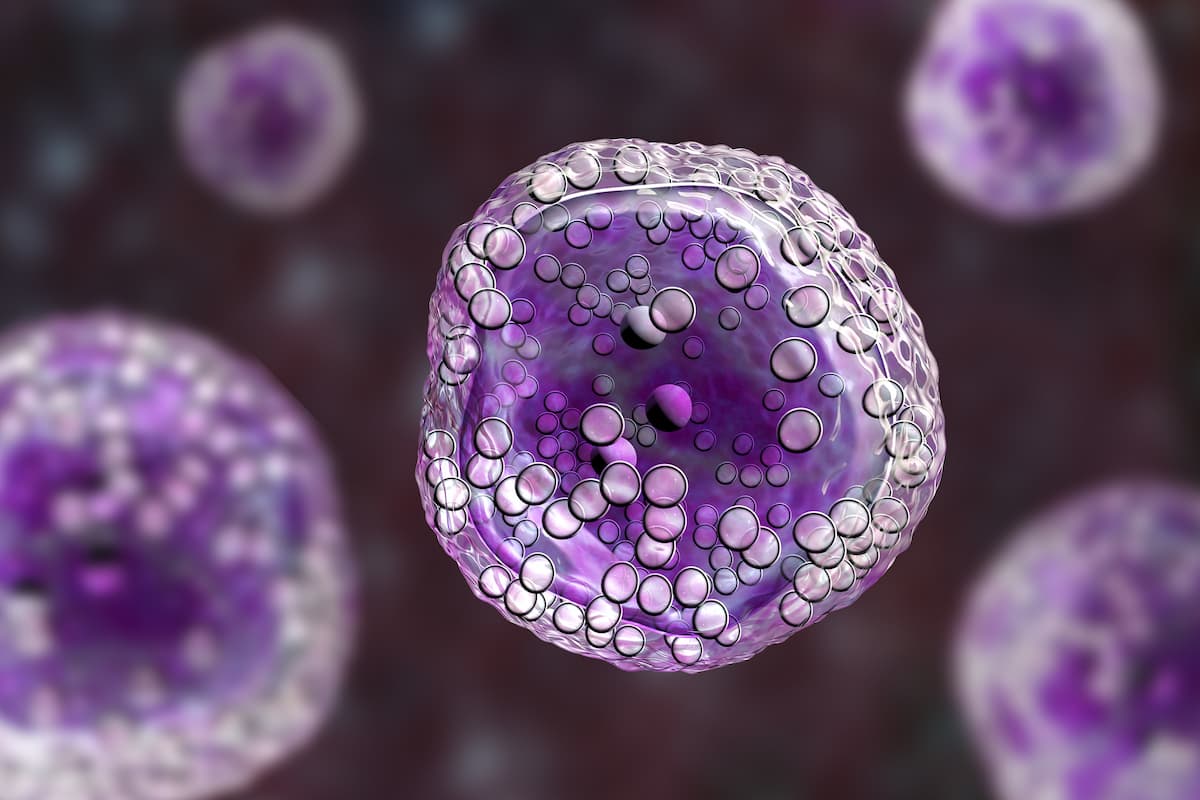Cilta-cel Yields Sustained Responses in R/R Multiple Myeloma
Findings from the CARTITUDE-2 trial support the use of cilta-cel in patients with multiple myeloma, says Tina Glow, AAS, RN, BSN.
“These data support the use of cilta-cel in patients with significant unmet need," according to Tina Glow, AAS, RN, BSN.

Treatment with ciltacabtagene autoleucel (cilta-cel; Carvykti) produced minimal residual disease (MRD) negativity and sustained responses in a cohort of patients with relapsed/refractory multiple myeloma, according to updated findings from the phase 2 CARTITUDE-2 trial (NCT04133636) presented at the 49th Annual Oncology Nursing Society Conference.1
Overall, 100% (n = 17/17) of evaluable patients in cohort A—which included those who were refractory to lenalidomide (Revlimid) and received 1 to 3 prior lines of therapy, including a proteasome inhibitor and an immunomodulatory drug—achieved MRD negativity following treatment with cilta-cel. MRD-negative status was reported in 93.3% (n = 14/15) of those in cohort B, which included patients with 1 prior line of therapy and progressive disease within 12 months following autologous stem cell transplantation (ASCT) or initiation of anti-myeloma treatment.
Cilta-cel elicited an overall response rate (ORR) of 95.0% and 100.0% in cohort A and cohort B, respectively. Additionally, 85.0% and 68.4% of patients from each respective cohort had an MRD-negative complete response (CR) or better.
Investigators also reported ongoing responses in 73.3% (95% CI, 47.2%-87.9%) of patients in cohort A and 70.5% (95% CI, 42.5%-86.7%) of those from cohort B at 24 months. The median time to first response was approximately 1 month for both arms, and the median time to best response was approximately 3 months and 5 months in cohort A and cohort B, respectively.
The progression-free survival (PFS) rate at 24 months was 75.0% (95% CI, 50.0%-88.7%) for patients in cohort A and 73.3% (95% CI, 47.2%-87.9%) for those in cohort B. Additionally, the overall survival rate at 24 months was 75.0% (95% CI, 50.0%-88.7%) and 84.2% (95% CI, 58.7%-94.6%) in each respective cohort.
“In this approximately 29-month follow-up, the majority of patients with lenalidomide-refractory multiple myeloma in earlier lines of therapy in cohort A and with early relapse in cohort B achieved MRD negativity and deep, durable responses following treatment with cilta-cel, with no new safety signals observed,” lead study author Tina Glow, AAS, RN, BSN, an assistant nurse administrator at the Blood and Marrow Transplant Center of Roswell Park Comprehensive Cancer Center, said in a presentation on these data. “These data support the use of cilta-cel in patients with significant unmet need.”
In the CARTITUDE-2 trial, patients in cohort A (n = 20) and cohort B (n = 19) first underwent apheresis followed by lymphodepletion with cyclophosphamide at 300 mg/m2 and fludarabine at 30 mg/m2; if necessary, investigators also administered bridging therapy. Following these procedures, patients received a single cilta-cel infusion at a target dose of 0.75 x 106 CAR-positive viable T cells/kg.
The trial’s primary efficacy end point was MRD negativity. Secondary end points included ORR, duration of response, and time to response. Safety end points included the severity of adverse effects (AEs) such as cytokine release syndrome (CRS) and immune effector cell-associated neurotoxicity syndrome (ICANS).
The median patient age was 60 years (range, 38-75) in cohort A and 58 years (range, 44-67) in cohort B. Additionally, most patients in each respective cohort were male (65.0% vs 73.7%). Of note, more patients in cohort A had triple-class exposed/refractory disease (40.0% vs 15.8%) or penta-drug exposed disease (20.0% vs 0.0%) and were more likely to be refractory to their most recent line of therapy (95.0% vs 78.9%).
Grade 3/4 treatment-emergent AEs (TEAEs) affected 95.0% of patients in cohort A and 94.8% of those in cohort B, and serious TEAEs occurred in 50.0% and 36.8% of patients in each respective cohort. Common hematologic AEs in each respective cohort included neutropenia (95.0% vs 94.7%), lymphopenia (80.0% vs 47.4%), thrombocytopenia (80.0% vs 57.9%), anemia (75.0% vs 57.9%), and leukopenia (60.0% vs 31.6%).
The median time to onset of CRS was 7 days in cohort A and 8 days in cohort B; investigators noted that all CRS events had been resolved. Six patients from each cohort had neurotoxicity such as ICANs, with a median onset of 8 days and 11 days in cohort A and cohort B, respectively. All instances of neurotoxicity were mitigated.
There was 1 secondary primary malignancy reported in cohort A and 2 others highlighted in cohort B. None of these secondary primary malignancies were hematologic diseases. Additionally, 5 patients in cohort A and 4 in cohort B had died.
The FDA approved cilta-cel for adult patients with relapsed/refractory multiple myeloma that is refractory to lenalidomide and previously treated with at least 1 line of therapy including a proteasome inhibitor and an immunomodulatory agent in April 2024.2 Supporting data for this approval came from the phase 3 CARTITUDE-4 trial (NCT04181827).
References
- Glow T, Whittington S, Cohen A, Varsos H, Akram M, Hillengass J. CARTITUDE-2: long-term efficacy and safety of ciltacabtagene autoleucel for patients with multiple myeloma and 1 to 3 prior lines of therapy (cohort A) and with early relapse (cohort B). Presented at the 49th Annual Nursing Society Conference; April 24-26, 2024; Washington, DC.
- CARVYKTI® is the first and only BCMA-targeted treatment approved by the U.S. FDA for patients with relapsed or refractory multiple myeloma who have received at least one prior line of therapy. News release. Johnson & Johnson. April 5, 2024. Accessed April 24, 2024. https://tinyurl.com/5n7zpkd9
Newsletter
Stay up to date on recent advances in the multidisciplinary approach to cancer.